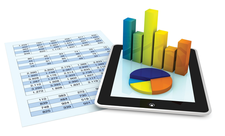Graphing the pandemic with open data
Visualize

© Lead Image © lucadp, 123RF
A lot of COVID-19 data is available through online REST APIs. With a little ingenuity and some open source tools, you can extract and analyze the data yourself.
Travel is broadening. You experience different cultures, see issues from different angles, and meet fun and unique people. I love living abroad, but I have to admit that I have less access to the news from home. Unfortunately, news outlets today spend more time on opinion than facts, and sometimes I just want the unvarnished truth. During the pandemic era, I am especially anxious to learn about the challenges faced by my family back home.
The good news is that a lot of open data on COVID-19 is available on the Internet via REST API calls. This data might be too dry for some, but if you want to get your own impressions of the COVID-19 crisis, without the sometimes intrusive "analysis" of newscasters and commentators, this free Internet data is a valuable resource. This article describes how to access and display freely available COVID-19 data using open source tools. And, if you've already had your fill of COVID-19 information, the techniques I'll describe in this article will also help you with other kinds of government and academic data available through REST APIs.
CovidAPI
The CovidAPI project [1] provides COVID data based on the well respected Johns Hopkins University dataset [2]. The original Johns Hopkins data is available in CSV form. Argentine software developer Rodrigo Pomba converted the data to JSON time series format. According to the documentation [3], the goal of the project is to make the data "queryable in a manner in which it could be easily consumed to build public dashboards."
[...]
